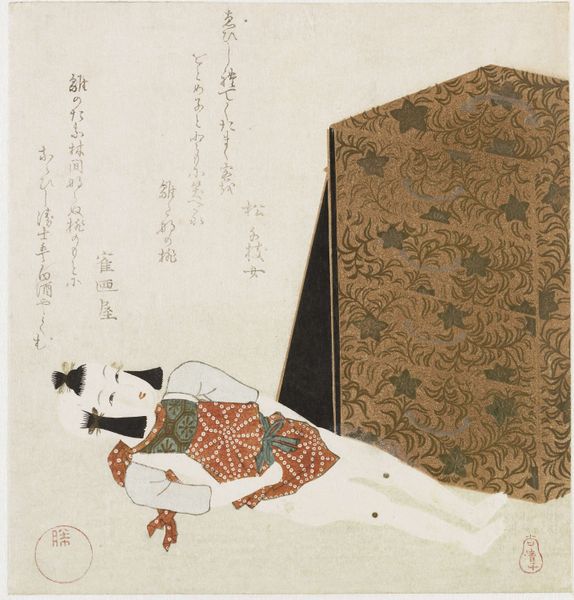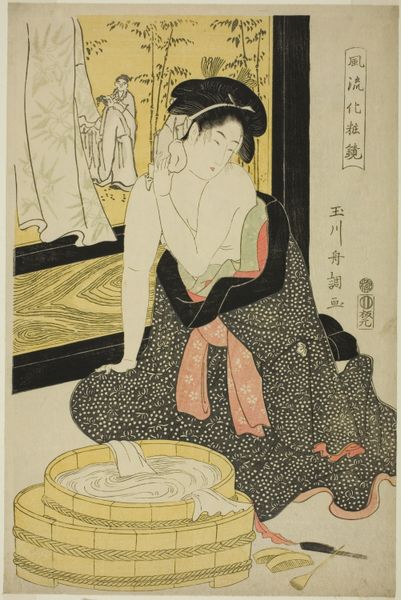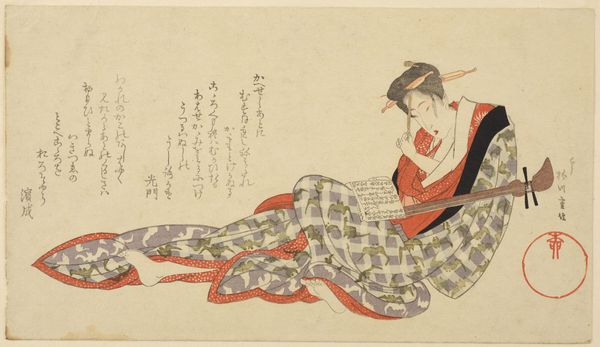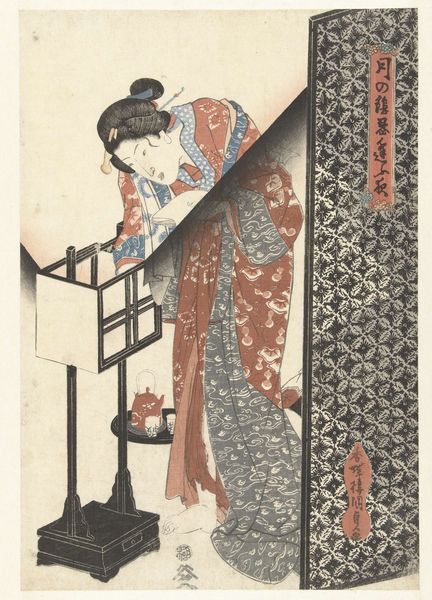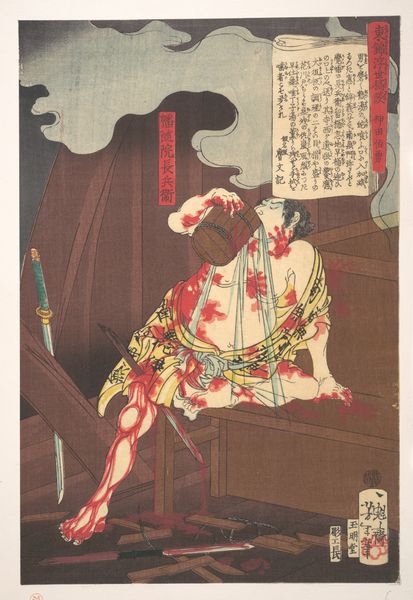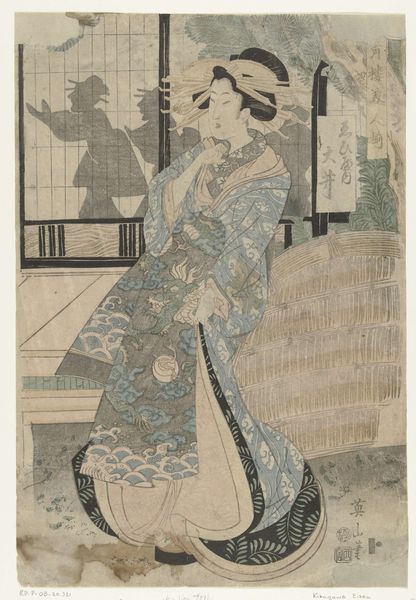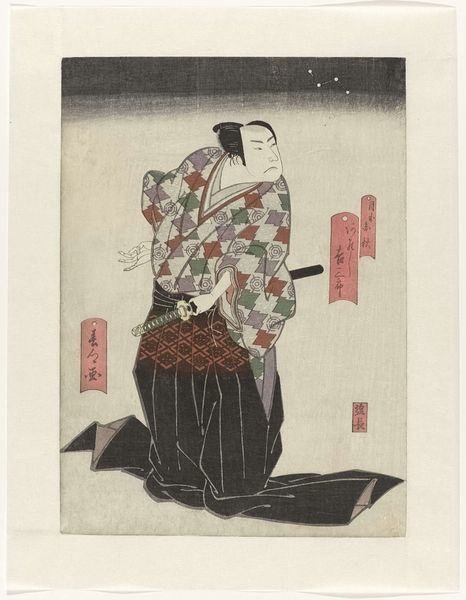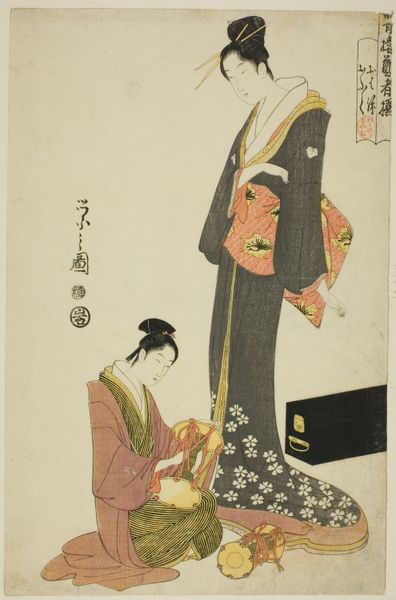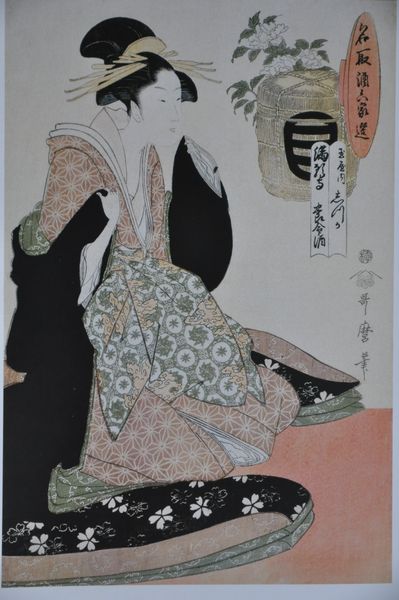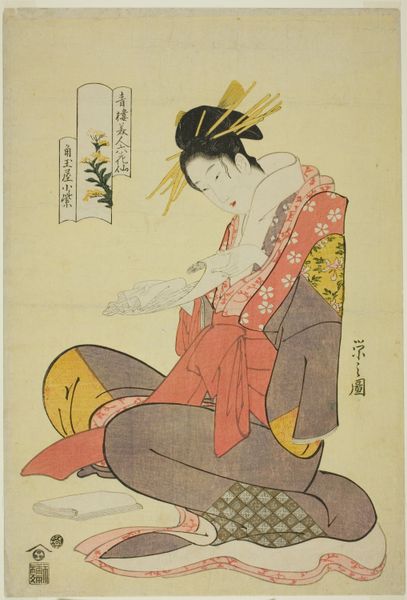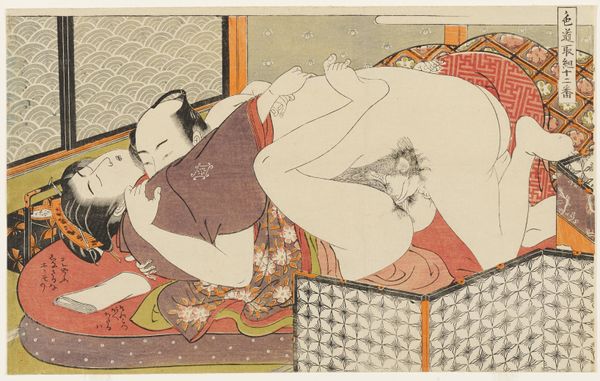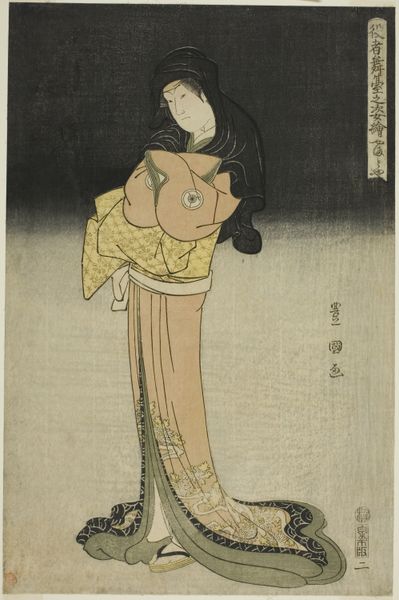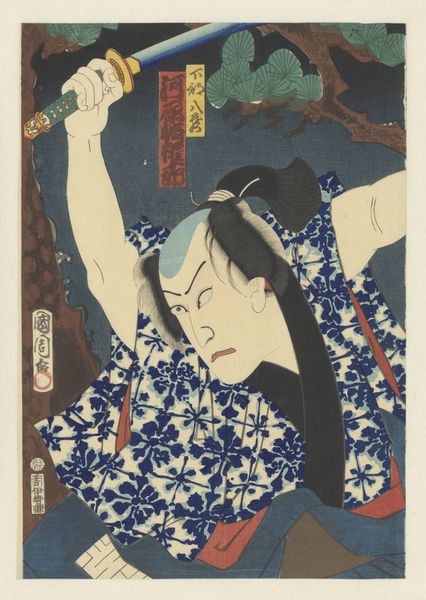
print, textile, woodcut
#
portrait
# print
#
asian-art
#
textile
#
ukiyo-e
#
figuration
#
woodcut
#
genre-painting
#
erotic-art
Dimensions: height 379 mm, width 250 mm
Copyright: Rijks Museum: Open Domain
Editor: So, this is *Gestreept katoen*, or "Striped Cotton," a woodcut print made between 1820 and 1830 by Utagawa Kunisada, and it’s here at the Rijksmuseum. The woman's pose, combined with the discarded combs on the floor, create an interesting tension... How do you interpret this work? Curator: I see layers of cultural storytelling encoded within the seemingly simple scene. Consider the woman’s exposed back and the falling combs as potent symbols, suggesting both vulnerability and intimate moments of adornment. Note the text in the image as well. The cultural memory embedded here speaks to the complex dance between display and concealment that's common in Ukiyo-e art. Do you notice how the stripes on her kimono both reveal and obscure her form? Editor: That’s a good point. The stripes do seem to both define her shape and also make her blend into the background. Almost like she is performing for herself, yet somehow very aware of being watched... Curator: Precisely! That push and pull is the key. What's compelling is the cultural memory linked to such images. It is worth thinking about these works beyond mere decoration, they are, in some cases, deeply political. How do we carry such symbolic memory with us through time? How has our perspective shifted regarding representation, sexuality, or power relations within intimate portrayals? Editor: I’d never considered how deeply intertwined these images were with politics. It’s interesting to think about how much we’ve changed in our perception of beauty and power. Curator: Indeed. Art becomes a lens to understand ourselves, even today. Thank you for your valuable considerations on the layered complexities woven into Kunisada's intriguing depiction of “Striped Cotton”.
Comments
No comments
Be the first to comment and join the conversation on the ultimate creative platform.
